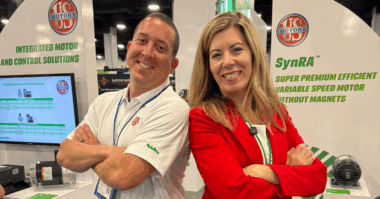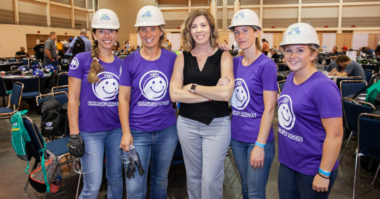In our previous article Pump Industry Emissions Regulations: Standardization and Industry Involvement we highlighted some of the aspects of achieving a high competence level in meeting and exceeding EPA emissions standards requirements. In the pump industry, the valve industry, and other specific areas of the industrial sector including areas within petrochemical, polyurethane, chemical, and manufacturing industries, emissions standards are always a focal point in the U.S.
In other nations where sustainability is the bigger focus, professionals are beginning to better comprehend the connection between sustainability and environmental impact, incorporating emissions control into project plans where the theme of sustainability is the golden thread.
While the rules of tolerable fugitive emissions release do vary from nation to nation and within each geographical region from plant to plant and even on the granular level of allowable PPM per product type within equipment systems; the fact remains that the EPA is working closely with the engineering companies and technology producers to determine which technologies are currently available and soon to be developed as their means for creating and enforcing emissions standards.
Industry Transparency and EPA Standards
With the increasing levels of transparency between the EPA, the FSA, the industrial technology producers, and each of the plants themselves come the rise of expectations and the stiffening of regulations for fugitive emissions control.
If the technology exists to permit a reasonable reduction in PPM allowance, the EPA is now very well aware of this and is planning around it. This creates an increasing need for reaching out to the industrial leaders who provide knowledge sharing and training services; those who work closely with the EPA and FSA (Fluid Sealing Association) and who have decades of industry experience to know what works and what doesn’t in each environment.
Proactively connecting with these professionals ensures compliance is more accurately achievable on a time-sensitive scale. The awareness of what works and what does’nt is not provided by efforts involved in statistical analysis and planning alone. Realities are that predictability often leaves something to be desired. Real life experience and know-how incorporated into overall design discussions are needed to successfully fulfill the various needs of excessive emission prevention.
Emissions Standards Effect on Pump Industry | Specifics and Overall System Challenges
One example of a pump related issue plants may face in association with fugitive emissions release is the standard single seal. There are situations where use of standard seals is not enough to adequately prevent emissions and considerations have to be made with regard to a choice between a double seal verses a gas seal in conditions where gas is held at a higher pressure.
These choices include facing the realities associated with emissions release. Where there may be no absolute 100% prevention of releases, the need to direct potential emissions released from entering the environment is another deciding factor in which seals to choose. Technologies that direct these emissions inward into the pump, rather than allowing fugitive emissions to flow freely outward and polluting the environment, exist as part of these standard, verses double, verses gas seal considerations. Obtaining advice from rotating equipment experts can help ensure the best choice is made to deal with the long-term requirements. When sharing of this knowledge is combined with best practices, a higher degree of sustainability is achievable.
Emissions standards regulations affect the industry as a whole in a variety of ways. Another key aspect of meeting the challenges associated with fugitive emissions release is testing. Industry pros realize no product can viably be employed as part of the overall system without rigorous testing, including technology tests where the product is put under actual process and environmental stresses. Many levels of testing, including the utilization of 3rd party testing facilities are all included in achieving products that can and will support industrial needs.
Pump System Compliance and New API Standards
Due to the significance of safety and environmental concerns, mixing the overall outlook with the detail and testing on each piece of the system is advisable. With increased enforcement by the EPA, plants failing to meet emissions control requirements face hefty fines. The eventual outcome will still be compliance. How much better to take those same steps without the addition of the fines and the negative attention received?
A large number of pump industry professionals are very involved in other areas of the overall system and have had their attention drawn to the focal point of valves in connection with emissions standards regulations.
At the top of the ‘hot topic’ list are recently released API 622 and API 624: Type Testing of Rising Stem Valves Equipped with Flexible Graphite Packing for Fugitive Emissions standards developed by the EPA in partnership with members of the affected industry. These standards revolve around packing and valves, which are necessary elements of the pump system and critically impact emissions control levels.
An excellent resource to turn to as more information is released about these new API standards is the addition to the online knowledge sharing community EmpoweringPumps.com has created: EmpoweringValves.com. Soon to come on the EmpoweringValves.com website will be an article in which several industry leaders have shared their thoughts in detail regarding the effect of emissions regulations and these new API standards on the pump and valve industry.
The health of global industrial organizations has become increasingly reliant on understanding all of the pieces that connect to make the whole of improved process and systems. Understanding best practices in association with pump system design and how these emissions standards regulations drive engineering and development is critical in producing sustainable industrial environments that support the national and international economy, as well as the petrochemical, chemical, polyurethane, and manufacturing world as a whole.
With the increasing comprehension of what realistic levels of compliance in association with fugitive emissions control actually have been and are by the EPA, and the latest methods for monitoring plants and enforcing stricter behaviors in the industry, these regulations are only going to become more and more heavily discussed. There will undoubtedly be an increased amount of action in 2014 and future years. This is the reality.
Participate in the Evolution of Today’s Industrial Community!
By continuing to participate in the online Empowering community, you’ll increasingly be exposed to and have the opportunity to become more heavily involved in discussions related to the pump and valve industries. You will be kept up to date about the increasingly prominent details surrounding emissions regulations and ways these challenges can be faced proactively and head-on.
The Empowering family shares valuable knowledge through EmpoweringPumps.com, EmpoweringValves.com, LinkedIn groups, Google+ discussions, Twitter tweets, Facebook communications, and through interactions at a wide variety of industry trade shows such as the AHR Expo that just occurred this month in January 2014.
Connecting industry professionals who have the know-how from training and many years of experience, and who participate in the creation and development of the technologies available now and that will be available in the years to come is essential, and the mission of the Empowering communities. Communication and knowledge sharing is the key that will create the solutions that will drive the future of industry.
With your continued involvement in the growth of the Empowering family, together we can make a difference!




